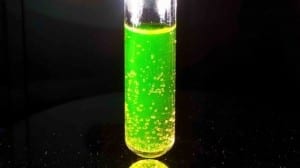“We are excited about our results and we are optimistic that we will successfully assemble a sunlight-driven water splitting system soon.”
Scientists at the University of Cambridge have produced hydrogen, H2, a renewable energy source, from water using an inexpensive catalyst under industrially relevant conditions (using pH neutral water, surrounded by atmospheric oxygen, O2, and at room temperature).
Lead author of the research, Dr Erwin Reisner, an EPSRC research fellow and head of the Christian Doppler Laboratory at the University of Cambridge, said: “A H2 evolution catalyst which is active under elevated O2 levels is crucial if we are to develop an industrial water splitting process – a chemical reaction that separates the two elements which make up water. A real-world device will be exposed to atmospheric O2 and also produce O2 in situ as a result of water splitting.”
Although H2 cannot be used as a ‘direct’ substitute for gasoline or ethanol, it can be used as a fuel in combination with fuel cells, which are already available in cars and buses. H2 is currently produced from fossil fuels and it produces the greenhouse gas CO2 as a by-product; it is therefore neither renewable nor clean. A green process such as sunlight-driven water splitting is therefore required to produce ‘green and sustainable H2’.
One of the many problems that scientists face is finding an efficient and inexpensive catalyst that can function under real-world conditions: in water, under air and at room temperature. Currently, highly efficient catalysts such as the noble metal platinum are too expensive and cheaper alternatives are typically inefficient. Very little progress was made so far with homogeneous catalyst systems that work in water and atmospheric O2.
However, Cambridge researchers found that a simple catalyst containing cobalt, a relatively inexpensive and abundant metal, operates as an active catalyst in pH neutral water and under atmospheric O2.
Dr Reisner said: “Until now, no inexpensive molecular catalyst was known to evolve H2efficiently in water and under aerobic conditions. However, such conditions are essential for use in developing green hydrogen as a future energy source under industrially relevant conditions.
“Our research has shown that inexpensive materials such as cobalt are suitable to fulfil this challenging requirement. Of course, many hurdles such as the rather poor stability of the catalyst remain to be addressed, but our finding provides a first step to produce ‘green hydrogen’ under relevant conditions.”
via University of Cambridge
The Latest Streaming News: H2 for fuel cells updated minute-by-minute
Bookmark this page and come back often
Latest NEWS
Latest VIDEO









